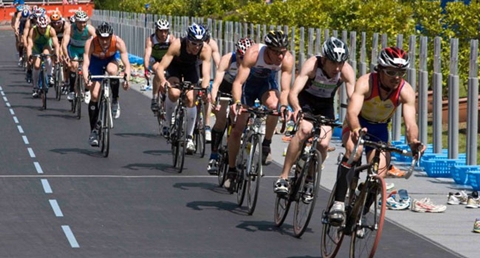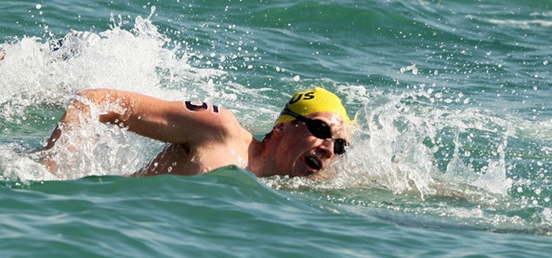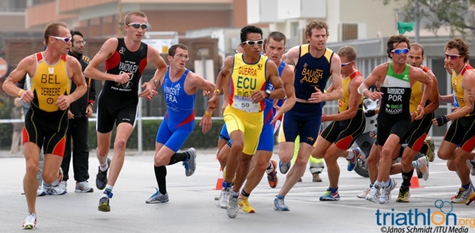"Regularly visualize yourself winning matches by running powerful, vivid and emotional images of success through your mind, seeing yourself playing brilliantly in every department of the game", by Roger Federer
Imagery can be a powerful tool for improving our skills. A bright and active imagination can facilitate progress in academic, work-related, health and social domains. This is true for many things including improving our mental capacity for playing chess, athletic performance, speech giving, and sexual performance and satisfaction. For example, mental imagery and visualization can play a key role for a new Runner finishing their first 5k or triathlon, all athletes looking to improve technique, set new personal records or finishing first.
What is Mental Imagery
Mental imagery, also called vizualization and mental rehearsal, is the process by which we create or recreate experiences in the mind using information stored in our memory. This structured imagery is aided by a vivid imagination. The more control we have over their imagination, the more we are able to control our performance.
Mental imagery is intended to train our minds and create the neural patterns in our brain to teach our muscles to do exactly what we want them to do.
Mental Imagery Enhances Skills and Athletic Performance
Imagery has the effect of priming muscles for subsequent physical action. Mental Imagery can have different uses in sports and in other challenges including:
1. Mental practice of specific performance skills.
2. Improving confidence and positive thinking.
3. Improving problem solving skills,
4. Controlling arousal and anxiety.
5. Preparation for performance.
6. Maintaining mental freshness during injury.
Implementing Mental Imagery - Mental Imagery Strategies
The more clearly you are able to experience mental images and the more accurately you can control your imagined movements, the more likely you are to translate the images into superior performance.
Different strategies can be employed to help implement mental imagery.
Feel Movement Internally. Some like to ‘feel’ movement internally. This process is known as Kinaesthesis.
Internally See Performance Unfold. Others like to see their performance unfold as if watching the playback from a headcam. This is known as Visual-Internal Imagery.
Externally See Performance Unfold. Another frequently used type of mental imagery is referred to as Visual-External Imagery – seeing yourself perform from a distance as though watching from a grandstand or viewing video playback.
Self-Hypnosis. Self-hypnosis is a state of heightened awareness and relaxation that is self-induced where one reaches a deep state of relaxation that is extremely pleasurable. Self-hypnosis can be a valuable tool for clear mental imaging.
Capturing Performance ‘in the Zone’. On those rare occasions when you’re performing in ‘the zone’ (your Ideal Performance State), it’s advisable to try to ‘capture in a bottle’ all of the mental aspects of your performance. This will help you to recreate that optimal mindset in the future.
The 4 R's.To be effective, like any skill, imagery needs to be developed and practiced regularly. There are four elements to mental imagery - Relaxation, Realism, Regularity and Reinforcement.
Relaxation. Having a relaxed mind and body so you can become involved in the imagery exercises. Self-hypnosis skills are helpful.
Realism. Create imagery so realistic you believe you are actually executing the skill. Seek Clarity, Vividness, Emotion, Control and Positive Outcome!
Regularity. Spending between 3 and 5 minutes on imagery seems to be most effective. It should be included in training and time outside of training should be spent on imagery. (10-15 minutes a day)
Reinforcement. Writing your imagery scripts will help you plan the content and timing of your imagery training and reinforce the image.
It is possible to engage all of the above senses at once to create really vivid experiences and improve performance.
How Mental Imagery Works
Mental Imagery works in several ways to improve skills, fulfillment and athletic performance.
Positive Expectations. Imagery increases our or an athlete’s expectation of positive performance. This increase in expectation of positive performance consequently results in an increase in notable mental or motor performance. Building confidence also helps lower anxiety.
Develops Neuromuscular Patterns. Performance involving mental motor skills are developed by strengthening and refining the connective proficiency between our brain, nervous system and muscles (neuromusclar pattern). In other words, the neural impulses passed from the brain to the muscular system during imagery may be retained in memory almost as if the movement had actually occurred. The excitement and creation of a neuromuscular pattern associated with a particular skill can also be initiated through imagery. This connection can take place with repeated trials of imagery without the risk of physical fatigue. Thus, when we practice mental imagery, we are facilitating later physical performance.
Optimum Arousal. The Attention-Arousal theory on imagery suggests that the use of mental imagery helps us or athletes achieve optimal arousal level prior to a performance, task or athletic event.
More about Ralph Teller. See Ralph's 1Vigor Log Calendar.






